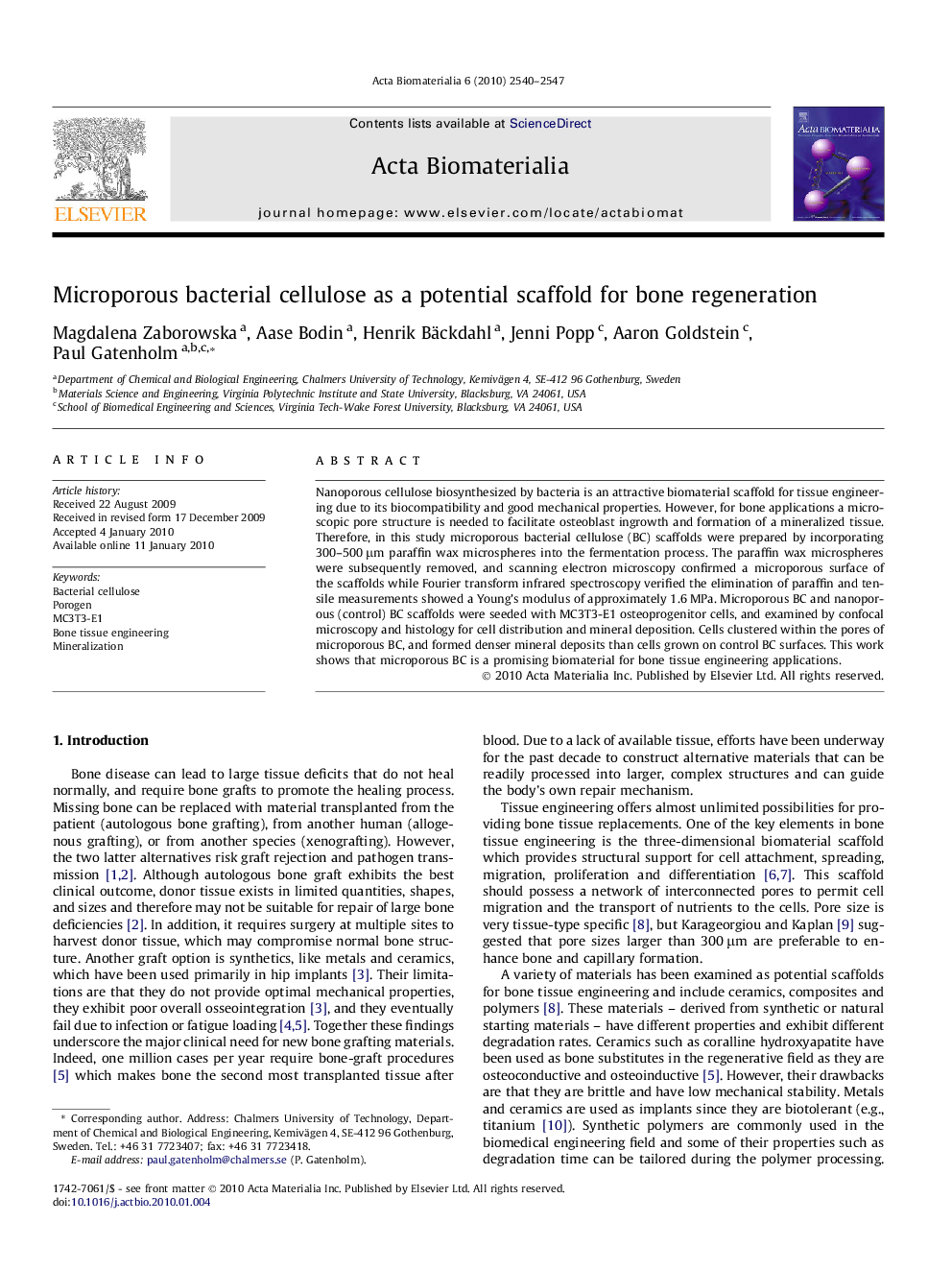| Article ID | Journal | Published Year | Pages | File Type |
|---|---|---|---|---|
| 2430 | Acta Biomaterialia | 2010 | 8 Pages |
Nanoporous cellulose biosynthesized by bacteria is an attractive biomaterial scaffold for tissue engineering due to its biocompatibility and good mechanical properties. However, for bone applications a microscopic pore structure is needed to facilitate osteoblast ingrowth and formation of a mineralized tissue. Therefore, in this study microporous bacterial cellulose (BC) scaffolds were prepared by incorporating 300–500 μm paraffin wax microspheres into the fermentation process. The paraffin wax microspheres were subsequently removed, and scanning electron microscopy confirmed a microporous surface of the scaffolds while Fourier transform infrared spectroscopy verified the elimination of paraffin and tensile measurements showed a Young’s modulus of approximately 1.6 MPa. Microporous BC and nanoporous (control) BC scaffolds were seeded with MC3T3-E1 osteoprogenitor cells, and examined by confocal microscopy and histology for cell distribution and mineral deposition. Cells clustered within the pores of microporous BC, and formed denser mineral deposits than cells grown on control BC surfaces. This work shows that microporous BC is a promising biomaterial for bone tissue engineering applications.
